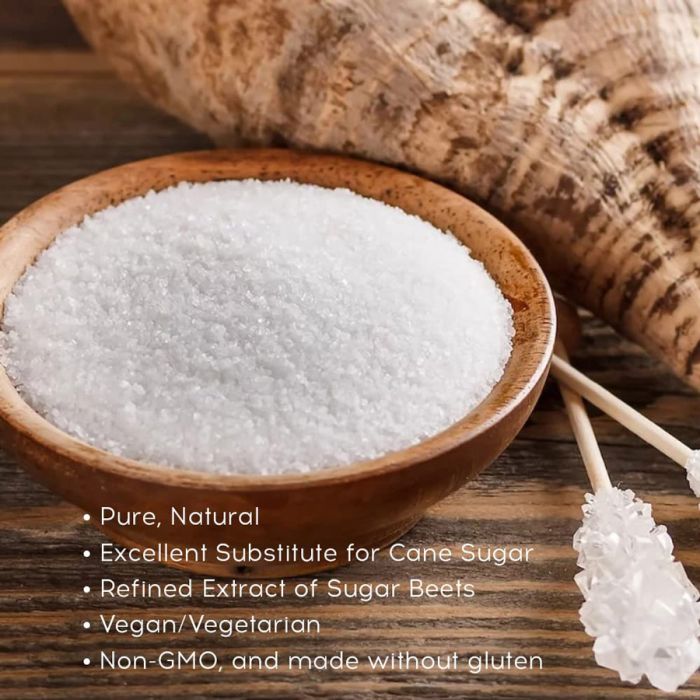In discussions of beet sugar vs cane sugar, the type of the sugar plays a crucial role in its properties.
In discussions of beet sugar vs cane sugar, the type of the sugar plays a crucial role in its properties.
Blog Article
Discover the Uses and Perks of Beet Sugar Vs Cane Sugar in Your Daily Diet
Checking out the distinct top qualities of beet and cane sugar reveals greater than just their sweetening abilities; it highlights their unique influence on health and cooking arts. Beet sugar, known for its refined flavor, is usually favored in fragile desserts, whereas cane sugar, with its tip of molasses, includes richness to durable dishes. Each type holds its own dietary account and glycemic ramifications, inviting a much deeper understanding of their functions in a well balanced diet plan and lasting usage techniques.
Origin and Manufacturing Procedures of Beet and Cane Sugar

The distinct environments and soil kinds required for growing sugar beets and sugarcane add to distinctions in their growing techniques and geographic circulation, affecting the business economics and sustainability of their manufacturing. beet sugar vs cane sugar.
Nutritional Contrast In Between Beet Sugar and Cane Sugar
Regardless of stemming from various plants, beet sugar and cane sugar are nutritionally really similar, both largely being composed of sucrose. Each offers about 4 calories per gram, equating to roughly 16 calories per tsp. Structurally, both sugars are made up of around 99.95% sucrose, with very little amounts of various other substances like wetness and trace element, which do not substantially modify their dietary accounts.

Ultimately, when choosing in between beet sugar and cane sugar based upon dietary web content alone, both offer similar advantages and drawbacks as they are basically forms of the exact same particle-- sucrose, giving fast power without other nutrients.
Effect On Health: Glycemic Index and Caloric Content
Checking out better into the impacts of beet sugar and cane sugar on wellness, it is necessary to consider their glycemic index and calorie content. Both sugars are identified as sucrose, which contains sugar and fructose. This composition leads them to have a similar effect on blood sugar degrees. The glycemic index (GI) of both beet and cane sugar is around 65, classifying them as high-GI foods, which can trigger fast spikes in blood glucose degrees. This is an important facet for people handling diabetes mellitus or those attempting to support their power degrees throughout the day.
Each kind of sugar contains around 4 calories per gram, making their caloric material equivalent. For those monitoring caloric consumption, specifically when handling weight or metabolic health and wellness problems, understanding this equivalence is essential (beet sugar vs cane sugar). Too much consumption of any kind of high-calorie, high-GI food can contribute to look here health concerns such as weight problems, heart condition, and insulin resistance.
Environmental and Economic Considerations of Sugar Manufacturing
Beyond health and wellness effects, the production of beet and cane sugar also raises considerable environmental and economic concerns. Sugar beet cultivation tends to need cooler environments and has a reduced geographical footprint contrasted to sugar cane, which prospers in tropical regions. Nevertheless, both crops are intensive in terms of water usage and land line of work, potentially leading to logging and water scarcity. Economically, the international sugar market is very unstable, influenced by modifications in international trade plans and aids. Many countries incentivize sugar manufacturing with financial backing, skewing market rates and affecting small farmers adversely.
In addition, making use of pesticides and fertilizers in both beet and cane sugar growing can cause soil destruction and contamination, further influencing biodiversity and local water bodies (beet sugar vs cane sugar). The choice between cultivating sugar beet or cane usually depends upon regional environmental conditions and financial variables, making the sustainability of sugar manufacturing a complicated issue
Culinary Applications and Taste Distinctions
While the ecological and economic aspects of sugar production are certainly significant, the selection in between beet and cane sugar likewise influences cooking applications and flavor accounts. Beet sugar, originated from the sugar beet plant, is understood for its incredibly neutral taste. This makes it a functional active ingredient in cooking, where it does not alter the taste of various other elements. It dissolves swiftly and is excellent for usage in cakes, cookies, and pastries.
Walking stick sugar, removed from sugarcane, frequently maintains molasses traces, which present a distinctive splendor and deepness. The slight variation in wetness web content in between beet and cane sugar can affect the texture and consistency of meals, making cane sugar a favored selection for specific dishes that click here to read benefit from its special properties.

Conclusion
In conclusion, both beet and cane sugar have distinct origins and production processes, offering comparable dietary accounts with small differences in sodium web content and taste. While their influence on wellness, specifically pertaining to glycemic index and calories, is equivalent, the selection in between them typically comes down to environmental, economic factors, and specific cooking demands. Recognizing these elements can direct consumers in making notified decisions that align with their helpful site wellness objectives and flavor choices.
Report this page